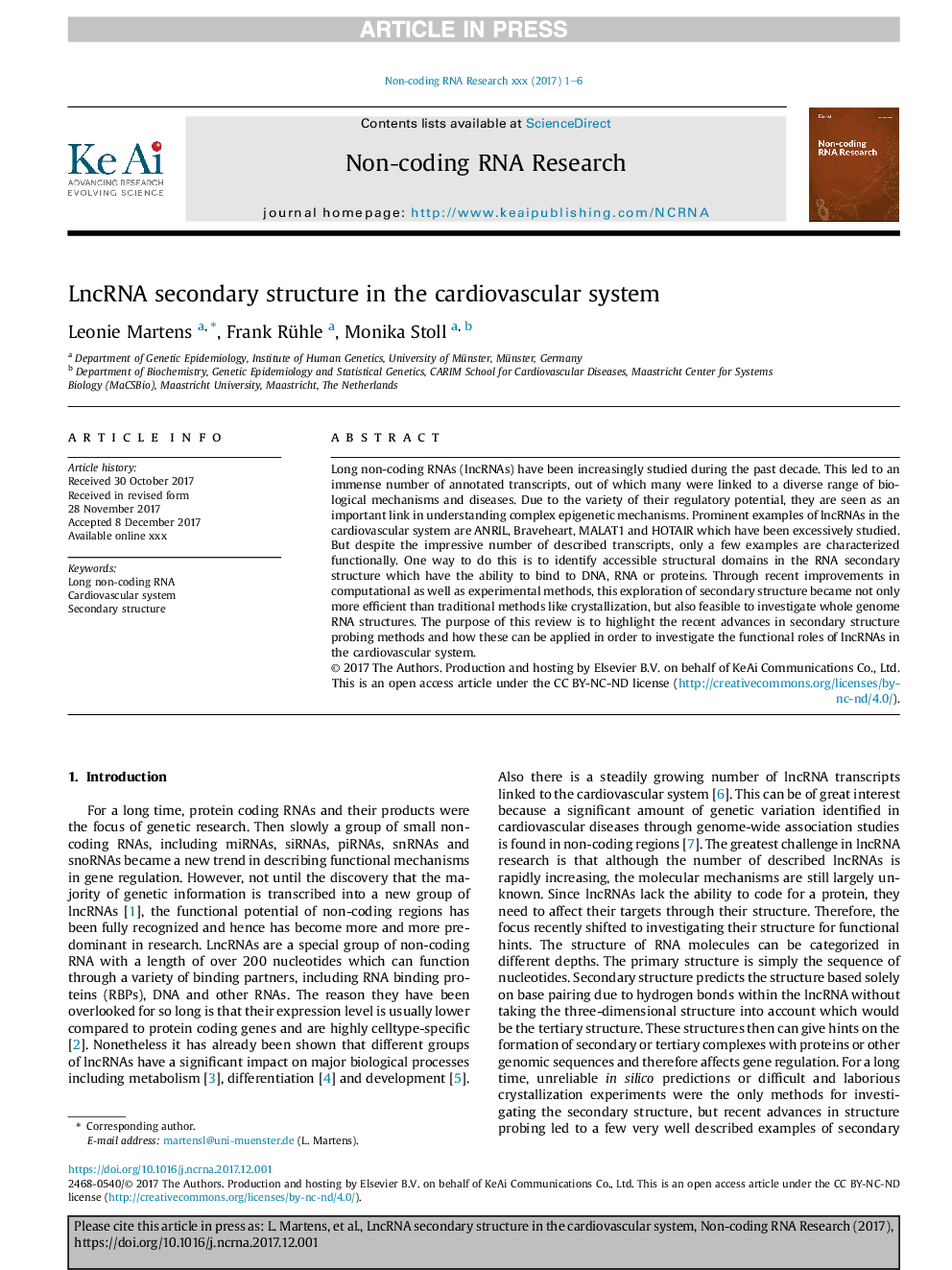| Article ID | Journal | Published Year | Pages | File Type |
|---|---|---|---|---|
| 8542580 | Non-coding RNA Research | 2017 | 6 Pages |
Abstract
Long non-coding RNAs (lncRNAs) have been increasingly studied during the past decade. This led to an immense number of annotated transcripts, out of which many were linked to a diverse range of biological mechanisms and diseases. Due to the variety of their regulatory potential, they are seen as an important link in understanding complex epigenetic mechanisms. Prominent examples of lncRNAs in the cardiovascular system are ANRIL, Braveheart, MALAT1 and HOTAIR which have been excessively studied. But despite the impressive number of described transcripts, only a few examples are characterized functionally. One way to do this is to identify accessible structural domains in the RNA secondary structure which have the ability to bind to DNA, RNA or proteins. Through recent improvements in computational as well as experimental methods, this exploration of secondary structure became not only more efficient than traditional methods like crystallization, but also feasible to investigate whole genome RNA structures. The purpose of this review is to highlight the recent advances in secondary structure probing methods and how these can be applied in order to investigate the functional roles of lncRNAs in the cardiovascular system.
Related Topics
Life Sciences
Biochemistry, Genetics and Molecular Biology
Genetics
Authors
Leonie Martens, Frank Rühle, Monika Stoll,
